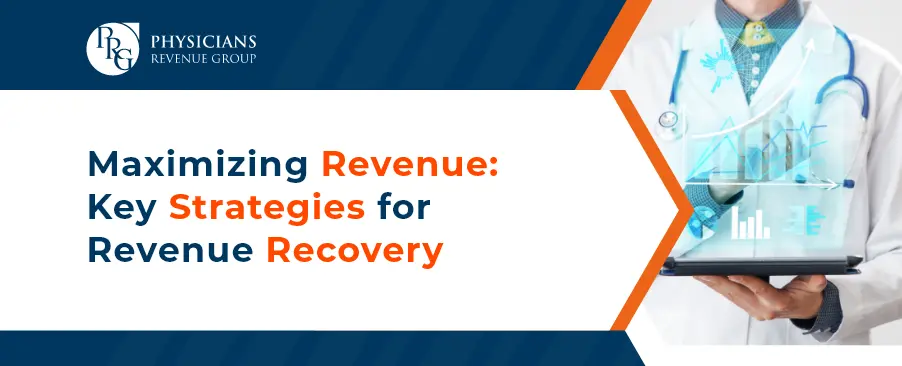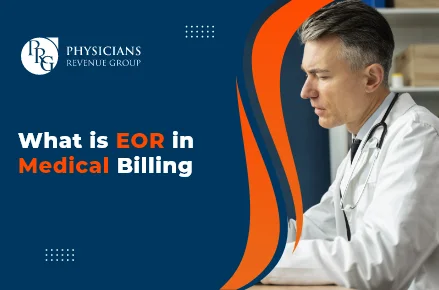
Email: info@prgmd.com | Call: +1 (630) 242-6474
Business hours: 9:00 to 5:00 | Monday to Friday
Email: info@prgmd.com | Call: +1 (630) 242-6474
Business hours: 9:00 to 5:00 | Monday to Friday

Table of Contents
ToggleWith the New Year setting its way – the healthcare revenue recovery teams across the US are taking their cue to plan for 2024 and develop effective strategies for revenue cycle optimization. While a healthcare practice cannot plan or prepare for everything the year may bring, it can still take actions to simplify existing processes. Furthermore, healthcare providers can work on revenue cycle management workflows to ensure better results this year.
How so?
While your RCM and billing teams might be undergoing strategy development, it is important that they take time to discuss and incorporate new ways to tackle uncompensated care. Revenue recovery strategies also include simplifying self-pay accounts and revenue leaks. It is vital to note that as the care costs grow, so will the need for innovative and efficient cash flow recovery strategies for managing them.
As more and more healthcare practices continue toward revenue recovery, the RCM teams must consider adjusting their conventional processes to the pandemic-induced changes, including shifting to remote care and work environments.
Healthcare RCM teams must consider the 8 strategies below for working around the new changes in the industry to ensure long-term revenue recovery success.
The pandemic became a catalyst for the growth of telehealth services – facilitating care systems to follow the social distancing guidelines and still care for patients. Consequently, telehealth is critical for healthcare revenue, enabling teams to track patients for poor outcomes and chronic conditions. Both of these can negatively impact a healthcare practice’s revenue. In such circumstances, providing consistent care services through technology prevents the deteriorating health of a patient and, therefore, reduces costs for the healthcare systems.
For a more proactive telehealth approach, healthcare practices must consider new telehealth technologies like live video conferencing tools for advanced remote patient monitoring. Moreover, practices can expand telehealth services to hard-to-reach populations and cater to patients with limited transportation or impaired mobility.
Another effective revenue recovery strategy involves optimizing the healthcare RCM to improve workflow. Simplifying your processes, automating tasks, and reducing errors can help your staff and teams to:
Consider computerizing tasks such as claims management, patient registration, and verifying patient eligibility.
While many health systems embraced CMS-required price transparency regulations in 2021, additional requirements are coming. Since 2022, CMS has directed providers to generate good-faith price estimates for services scheduled more than three days in advance. Using procedure cost information and patient health insurance details, patient cost estimators are vital in achieving price transparency. To enhance the patient billing experience, health systems should offer payment options like plans or alternative models.
Moreover, accurately predicting patient care costs relies on the health system knowing the billing structure and reimbursement from the payer. Price transparency normalizes point-of-service collections for the patients. To improve the patient billing experience further, healthcare practices should offer payment options such as payment plans or alternative payment models.
Optimizing the healthcare revenue recovery process involves aligning limited resources with cash-generating activities. Focusing on revenue-generating tasks enhances financial performance and reduces waste.
– are effective strategies for revenue cycle process optimization. Health systems can achieve better financial outcomes by concentrating efforts where revenue is maximized.
Efficient revenue recovery starts with collecting relevant patient data. Delayed data collection complicates identifying the correct payer, causing stress for patients and care teams. Hospitals with online portals facilitate patients to provide information before their visit. Communicating portal availability through email, text, and signage encourages patients to contribute relevant data, with the benefit of potential bill coverage.
The portal is less likely effective if a patient has never entered the hospital. Work cross-departmentally alongside hospital registration teams as a backup. It is also important to ensure that all processes and paperwork are in place for gathering patient insurance and billing data swiftly.
Providers can enhance revenue recovery by engaging patients as partners in the process. Digital patient engagement tools facilitate pre-check-in activities, enabling patients to:
At the appointment, the patient should be able to pay that amount. However, if there is a claim denial, the medical provider can communicate with the patient through the patient portal to request updated information.
Managing services not covered by insurance is vital for financial success. One key metric is days in accounts receivable, indicating how long an independent practice takes to receive payment for provided services. According to the American Academy of Family Physicians, the target metric is 30-40 days. If a significant percentage of account receivables falls into the 90-120-day range, there is a deficiency in the medical billing collection process.
Maximizing cash flow in RCM involves a strategic approach – encompassing various aspects of the revenue cycle. From pre-registration procedures to patient engagement and efficient accounts receivable management, each step contributes to the overarching goal of revenue recovery. Implementing these strategies positions health systems for financial success while ensuring a seamless and transparent experience for providers and patients. As the healthcare industry in the US continues to evolve, these strategies will play a vital role in simplifying the complexities of revenue management.
Share:
Categories
Recently Added

What is an ABN in medical billing?

What does a Clearinghouse do During Claims Submission?

What is EOR in Medical Billing?
We Would Love to Assist You!
We treat your data confidentially and don’t share any information with a third party.